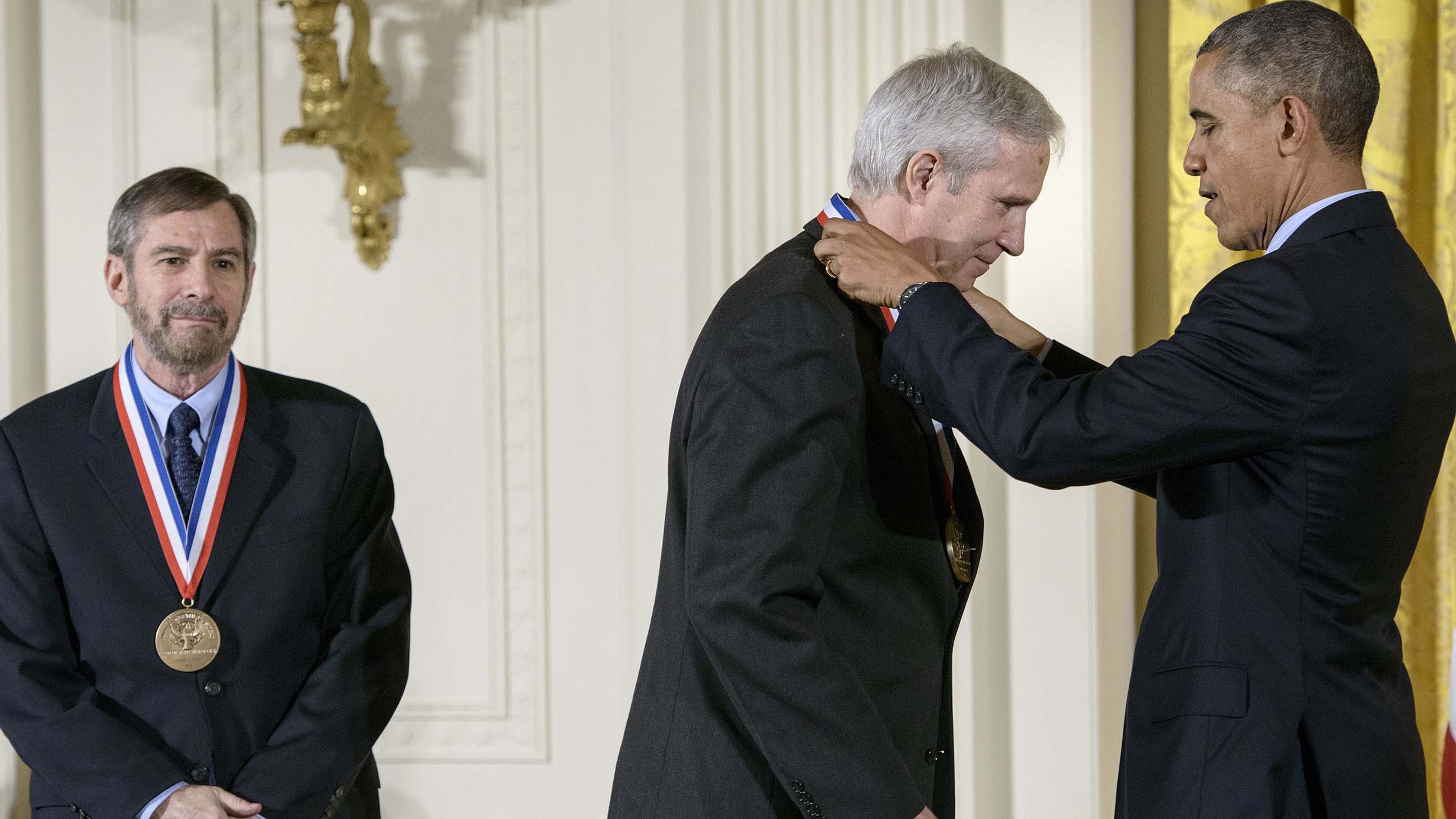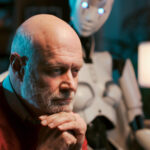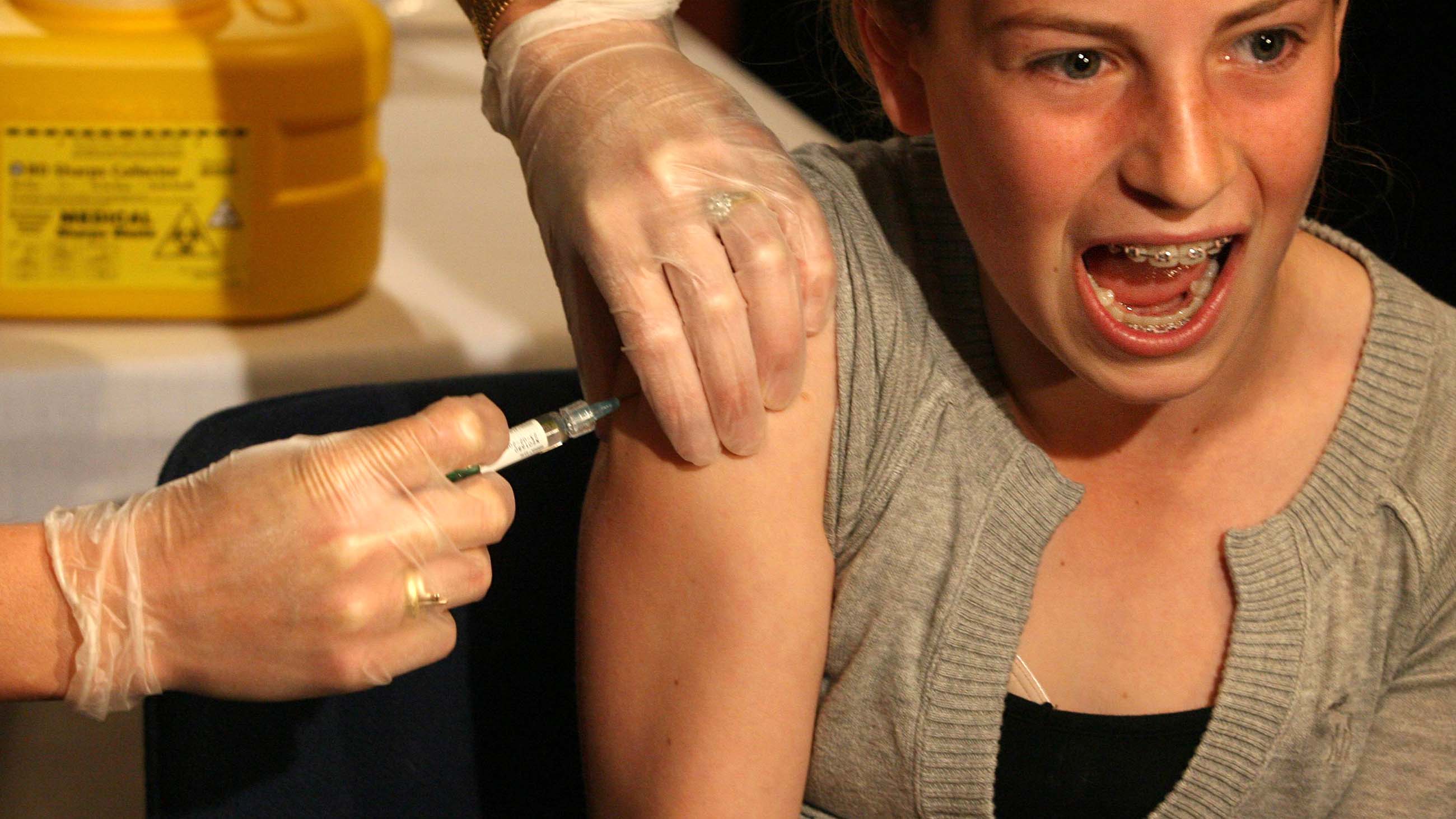Five Questions for ‘American Nobel’ Winners, Douglas Lowy and John Schiller
The Lasker awards for medicine are often called “the American Nobels.” This year, the prize in the clinical research category went to two National Cancer Institute scientists for their role in developing a vaccine that may have saved the lives of thousands of women and girls around the world: the vaccine against human papillomavirus, which causes virtually all types of cervical cancer. HPV is also linked to other forms of cancer in both men and women.
The winners are Douglas R. Lowy, 75, and John T. Schiller, 64, both of the Center for Cancer Research in Bethesda, Maryland. (Until October, Lowy was the National Cancer Institute’s acting director.)
For this installment of the Undark Five, we spoke over lunch in New York City and then again by phone. The conversation has been edited for length and clarity.
UNDARK — You have been research collaborators since 1983. What makes your partnership successful?
DOUGLAS R. LOWY — I think we both feel that the whole is greater than the sum of its parts. John knows a lot of things I don’t. I know a few things he doesn’t.
We first started when John wrote proposing to become my postdoc on a project on retroviruses. I wrote back, saying, “Your project is very good, but I’ve just started working on the papillomavirus. That might be even more interesting to you. Not much is known about them and the field is wide open.”
At that point, what we knew was that they were implicated in a rare type of skin cancer. Beyond that, the link between human papillomaviruses and cancer was tenuous at best.
JOHN T. SCHILLER — Doug had made a remarkable discovery. He’d taken these normal mouse cells, infected them with a bovine papillomavirus, and these normal cells were then transformed into cancer-like cells.
With most cells, there are thousands of genes, some of which, when altered, can cause cancer. But which ones? Given the state of technology in the 1980s, it was almost impossible to figure that out. This papillomavirus only had eight genes, which made it an ideal model for entering the complex world of cancer. Once you could identify which of those eight was causing the cell to become cancer-like, you could ask, “What exactly does it do?”
UD — How did this lead to a vaccine against cervical cancer?
JTS — Not long after joining Doug’s lab at the National Institutes of Health in Bethesda, I attended my second lecture there. It was by Harald zur Hausen, who would later win the Nobel Prize for his work in this area. He disclosed, “We’ve found this human papillomavirus in 50 percent of cervical cancers.”
Eureka! That told me that in studying the papillomavirus, we weren’t just studying a model for how cells become cancerous, but a potentially important human pathogen.
We’d spend the next decade trying to figure out how these viruses caused cervical cancer in humans. That knowledge was key to being able to develop a vaccine. Once we understood the process, it increased the scientific acceptance of the idea that the virus caused the cancer and we could go forward with figuring out what it would take to make a vaccine.
DRL — We started working on it in 1991. There would be a lot of steps and collaborations with other colleagues, but by 1998 we’d progressed to the point we could do pilot studies on humans to determine whether or not this HPV vaccine was safe. It was tested on young men and women with no problems. They made high levels of the right kinds of antibodies. By 2006, the first of the vaccines based on our research — Gardasil — was approved by the FDA. I’ve just given you a simplified version of the timeline. It took roughly 15 years.

UD — Your vaccine has been controversial. Considering how deadly cervical cancer can be, were you surprised that there were people who opposed it?
DRL — We did try to anticipate some of what we’d be encountering. But, you know, John and I are research scientists. We are not trained public health specialists. There are people at the CDC who are better at that.
One of the things we did in advance was talk to people. For instance, we had a person who worked in the lab who was a Christian fundamentalist. I talked with her quite a bit about what the reaction might be from people in her community. I wondered if they were worried that a vaccine inoculating people against a sexually transmitted disease might lead to increased sexual activity. Her feeling was that most people would understand how useful the vaccine would be. I was pleasantly surprised at how reassuring she was.
Just before the vaccine was to become available, the FDA held hearings. People from socially conservative groups gave their views. They said, in essence, “We think this is a real advance. Just don’t make it mandatory. We want parents to be able to determine whether our children should get vaccinated.”
However, within a very short time period, there were a number of states that tried to get HPV vaccinations made compulsory. It turned out that a pharmaceutical company was behind those efforts and the result was major pushback. The vaccine got off to a bad start.
JTS — I’ve come to think that there’s another issue hindering full coverage in the United States. It’s the scattershot way we organize public health interventions.
If you look at Australia, a country that is culturally very similar, in the first year they had 90 percent coverage! The Australians deliver the vaccine in schools as part of a national immunization program.
In the U.S. to this day, we struggle for 50 percent coverage. Here, you have to take your daughter or son out of school three times in six months to take them to the clinic. You have to be very proactive about it. The rules are different in various states. In some, you can get the vaccine in pharmacies; in others, you can’t.
UD — You’ve encountered some opposition from anti-vaccine campaigners. Have you been able to counter them?
DRL — The assertions they make about the HPV and other vaccines are not evidence-based. We try to be positive. We try to show the research that shows that the benefits of the vaccine greatly outweigh the potential harms. There’s a small group of people who are just opposed to all vaccines. They are not going to listen to evidence on the safety of this or any other vaccine.
One thing we’ve been trying to show is how important it is to get wide uptake, because when you have that, you can even protect people who’ve not been vaccinated — “herd immunity.” Let’s say there’s a country where the vaccine has not yet been released and it turns out that 10 percent of the population is infected with the virus — so an individual has a one-in-10 chance of getting it. Then, after a campaign, there’s an 80 percent uptake. In a few years, your chances of being infected are one in 50.
JTS — Rather than waste precious resources convincing the anti-vaxxers, I think a better strategy would be to focus on enlisting pediatricians, because it is quite clear from studies that pediatrician hesitancy is an issue. If you look at other vaccines that are given to children in that the same age group — 11 to 12 — the uptake is much greater than for the HPV. We need for the pediatricians to routinely say, “Okay, it’s time for your DPT. Oh, also, there’s this new anticancer vaccine, if you want it you can have it too.”
There was a study at a pediatric clinic where there was huge variation in the number of doctors recommending the HPV vaccine. When they put on a board the names of the doctors and the tally of the prescriptions, the numbers went up.
UD — Has part of the problem been that your vaccine is given to adolescents for an infection contracted through sexual activity? Do parents resist the vaccine because they don’t want to accept the idea that their children might become sexually active?
DRL — A lot of parents ask, “Why does an 11-year-old take this vaccine? They aren’t yet sexually active.” The answer is, because the vaccine is even more effective when given to people before they become sexually active. The bottom line is that you are protecting her for when she does become sexually active. And you’re protecting the man she marries. By the way, with 11-year-olds, because their immunity is so good, the CDC is recommending two shots and not three.
JTS — We’ve tried to emphasize to parents that HPV infections are so common that they are basically synonymous with being sexually active. The numbers show that if you’re a sexually active young person and you are not immunized, you are very likely to get an HPV infection.
Parents have to face that. These days, the vaccine’s manufacturers don’t call it a vaccination against an STD, but against cancer. That seems to be a good approach.
You know, the year that we made our first fundamental discoveries was 1992, and that was the year that my daughter was born. By 2006, the year the vaccine was finally available, she was 14. At the clinic, as she was being inoculated, she proudly told the nurse, “That’s my dad’s vaccine!”
Claudia Dreifus writes the “Conversation With…” feature for the science section of The New York Times. An honorary member of the science honor society Sigma Xi, she teaches science communication to graduate students at Columbia University’s Earth Institute.











Comments are automatically closed one year after article publication. Archived comments are below.
The messaging on this vaccine was poorly executed. The information the public received seem to have been designed to be non-specific, general and therefore, vague. Underestimating the public by leaving gaps in the narrative about this vaccine left parents’ questions unanswered. Stepping into that space were those with a religious, sexual or anti-vaccine objection whose beliefs ran counter to the scientific facts, but were able to confuse the minimally informed public.
When public agencies underestimate the intelligence of the audience & deliberately craft news releases thinking they can control possible backlash, or don’t openly share the true rationale behind a general population vaccination they open the door to rumors spreading. Limiting information leads to public confusion and allows undeserving people to claim crediblity as they offer twisted interpretations that elevate suspicion. They design a narrative that serves their own purposes in opposition to what the medical community knows. Clear and open communication not paternalism is the key, trusting the public so they can trust the message.
The near eradication of Polio has demonstrated the savings in lives, suffering, and dollars that can come from effective vaccines.
Agree. I remember as a child how we all were taught to fear the summer. That’s when kids were struck by polio. And you actually saw schoolmates disappear to the disease. Then one day–was I in the 5th grade?– the Salk vaccine was announced. Every child in school was immunized. The scourge vanished. As did the horrible dread it brought to every family. When you’ve seen such miracles in your own life, you know what a gift to humanity the HPV vaccine is. These two researchers deserve our admiration.